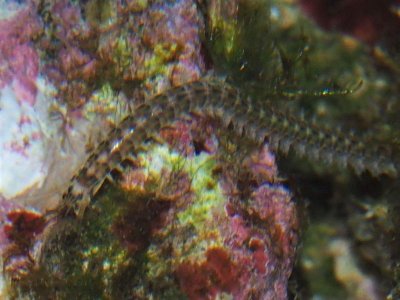You are using an out of date browser. It may not display this or other websites correctly.
You should upgrade or use an alternative browser.
You should upgrade or use an alternative browser.
What is this worm?
- Thread starter Stenhoff
- Start date
No, that's not a bristle worm, it's a Eunicid.
You can tell a predatory eunicid worm by the presence of antennae and the well defined legs.
I would try to get them out, although luckily I haven't had them in my tank, but there are plenty of folk who have had to get them out, who can advise on what worked and didn't work for them.
Bleach is a bit extreme though lol.
You can tell a predatory eunicid worm by the presence of antennae and the well defined legs.
I would try to get them out, although luckily I haven't had them in my tank, but there are plenty of folk who have had to get them out, who can advise on what worked and didn't work for them.
Bleach is a bit extreme though lol.
What else is in the tank? I'm guessing not much if you are considering destroying your rock.
In reality - for how much time it will take you to break it down, bleach the rocks, clean the rocks to make them safe again, then restart the tank from scratch. You could probably spend that same amount of time and trap them.
I think I've even seen people on this forum offer to pay for shipping if you can capture them alive.
In reality - for how much time it will take you to break it down, bleach the rocks, clean the rocks to make them safe again, then restart the tank from scratch. You could probably spend that same amount of time and trap them.
I think I've even seen people on this forum offer to pay for shipping if you can capture them alive.
Eunice worm.
Eunice worm.
Yes i know it's eunice but i was thinking of what eunice species. I have emailed a marine biologist Leslie Harris with pictures. Some species is herbivores and scavengers. This ones is drilling holes into my rock. I saw 8 when looking with a red light. I was thinking of trying to dip my rocks in carbonated saltwater to drive them out. That should not affect the bacteria.
Eunice worm.
This is not a bobbit worm it's a ragworm (Nereid). Bobbit worms have 5 antennaes this one got 10. It's possibly Perinereis cultrifera.
Still predatory.
Looking for id help.
This one could be a Phyllodocid worm. I'm not sure on the scale, Phyllodocid's tend to be small, however many are predatory species. It could certainly also be a neirid as suggested above. Your specimen certainly appears to fit the predatory class, having well defined legs, segments and antennae
On your latter comments, the only difference between a predatory worm killing or scavenging is opportunity. It's often easier and more advantageous for a predator to scavenge than hunt. However don't expect a predator not to take the opportunity to kill.
This one could be a Phyllodocid worm. I'm not sure on the scale, Phyllodocid's tend to be small, however many are predatory species. It could certainly also be a neirid as suggested above. Your specimen certainly appears to fit the predatory class, having well defined legs, segments and antennae
On your latter comments, the only difference between a predatory worm killing or scavenging is opportunity. It's
often easier and more advantageous for a predator to scavenge than hunt. However don't expect a predator not to take the opportunity to kill.
That could also be it. They wont leave the rock completly so trapping them with a bottle wont work. Perhaps a snare would work but i have atleast 10 of them so it will be much work.
That could also be it. They wont leave the rock completly so trapping them with a bottle wont work. Perhaps a snare would work but i have atleast 10 of them so it will be much work.
I'm no expert at trapping them, but I'm sure people have used PVC pipe leading to the bottetrap. Basically, I guess you want them to feel secure about coming out.
Alternatively, mount the rock over a bucket and squirt soda water or RO in the the holes you think they are living in.
If you have a search of the forum, there's lots of examples of the methods folks have used.
Good luck with it!
I'm no expert at trapping them, but I'm sure people have used PVC pipe leading to the bottetrap. Basically, I guess you want them to feel secure about coming out.
Alternatively, mount the rock over a bucket and squirt soda water or RO in the the holes you think they are living in.
If you have a search of the forum, there's lots of
examples of the methods folks have used.
Good luck with it!
I got one today by squirting cold tapwater into it's hole. It was about 10cm.
Similar threads
- Replies
- 9
- Views
- 769
- Replies
- 0
- Views
- 440

